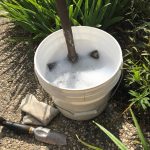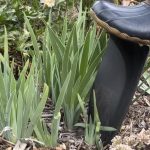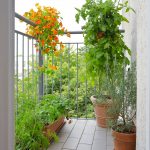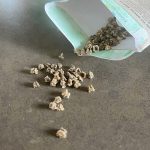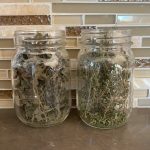Summer weather can be unpredictable and hot, dry weather can take a toll on a garden. How can you help your plants beat the heat?
Let’s dig in and talk about 6 things you can do to keep your garden healthy and reduce plant stress when it’s sweltering.
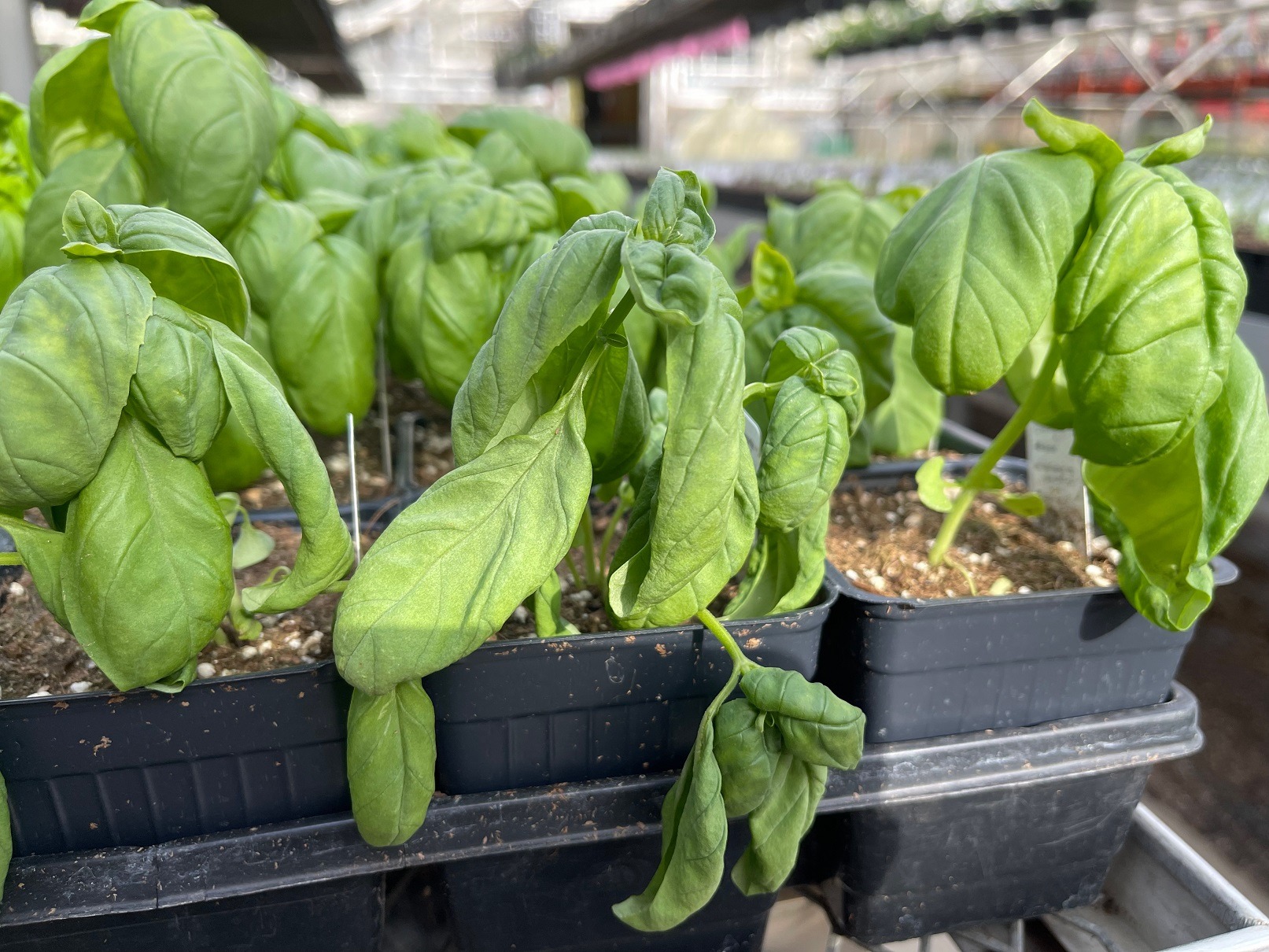
1. Meticulously Maintain Garden Hydration in Hot Weather
Knowing when and how to water is one of the keys to maintaining healthy garden spaces.
Just like humans, plants need plenty of water to keep their metabolic activities in check. Without adequate hydration, tissue turgor, photosynthesis, and all other processes get sluggish and become compromised.
How can you tell your plants need water? Plants talk to us through their leaves. Wilting, or flagging, is the first sign that plants are low on water.
Wilting happens on a continuum. A little wilt isn’t harmful; the plant is just telling you with that slight leaf bend that they’d like a drink. But a full-on, complete leaf collapse is a high-stress event for a plant.
You never want your plants to get to this place because sometimes they don’t recover, and other times there may be lasting effects for the rest of the plant’s life. They may not grow to their full height, there may be poor flowering, and poor fruit or vegetable production.
Check Hydration Levels Daily
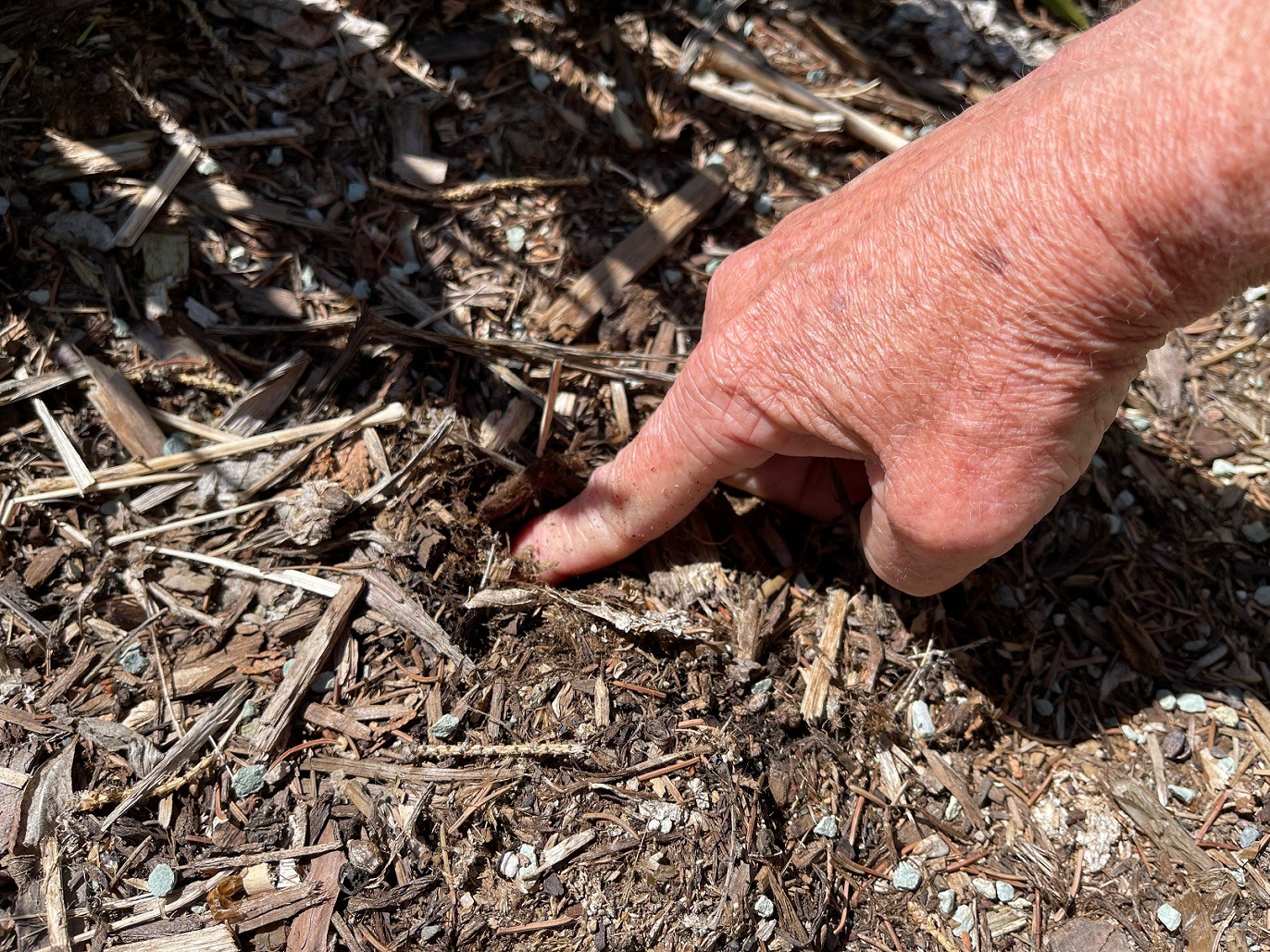
Create a routine of walking through and checking your garden early in the morning. This goes for all types of gardens: in-ground flower and vegetable gardens, balcony or patio container gardens, and hanging baskets. What you discover in your walkabout will guide your actions and prevent big problems later in the day.
A reliable method to check the moisture of flowerbeds, in-ground gardens, raised beds, planters, and hanging baskets is by sticking the entire length of your index finger into the soil. If it is dry at the tip of your finger or the joint next to it, it’s time to water.
An alternative method for hanging baskets is to lift the bottom of the pots to assess their weight; we do this all the time in the greenhouse. After a few full drinks of water, you will know how much a well hydrated hanging basket weighs. Water them when they feel light.
When and How to Water Your Garden When It’s Hot
Water your plants in the morning. Whether your plants are in the ground, in planters, or hanging baskets, it is best to water in the morning to give them a fresh supply for the entire day.

It’s best to water at the base of a plant. Try to avoid spraying water over the leaves because this extra moisture creates a humid environment perfect for promoting fungal growth. Gently move the foliage over with one hand and direct the water onto the top of soil where the stems emerge from the soil.
Watering during the hottest time of day and in the evening isn’t ideal for plants, and here’s why:
- The sun’s rays can act as a magnifying glass on water droplets and could cause leaf burn in the heat.
- Watering late in the evening can create a persistent cool, wet, dark environment that can lead to the development of plant diseases.
Methods of how to water hanging baskets, planted containers, in-ground gardens, flowerbeds, and raised beds differ slightly from one another, so Iet’s cover each one separately:
How to Water Hanging Baskets
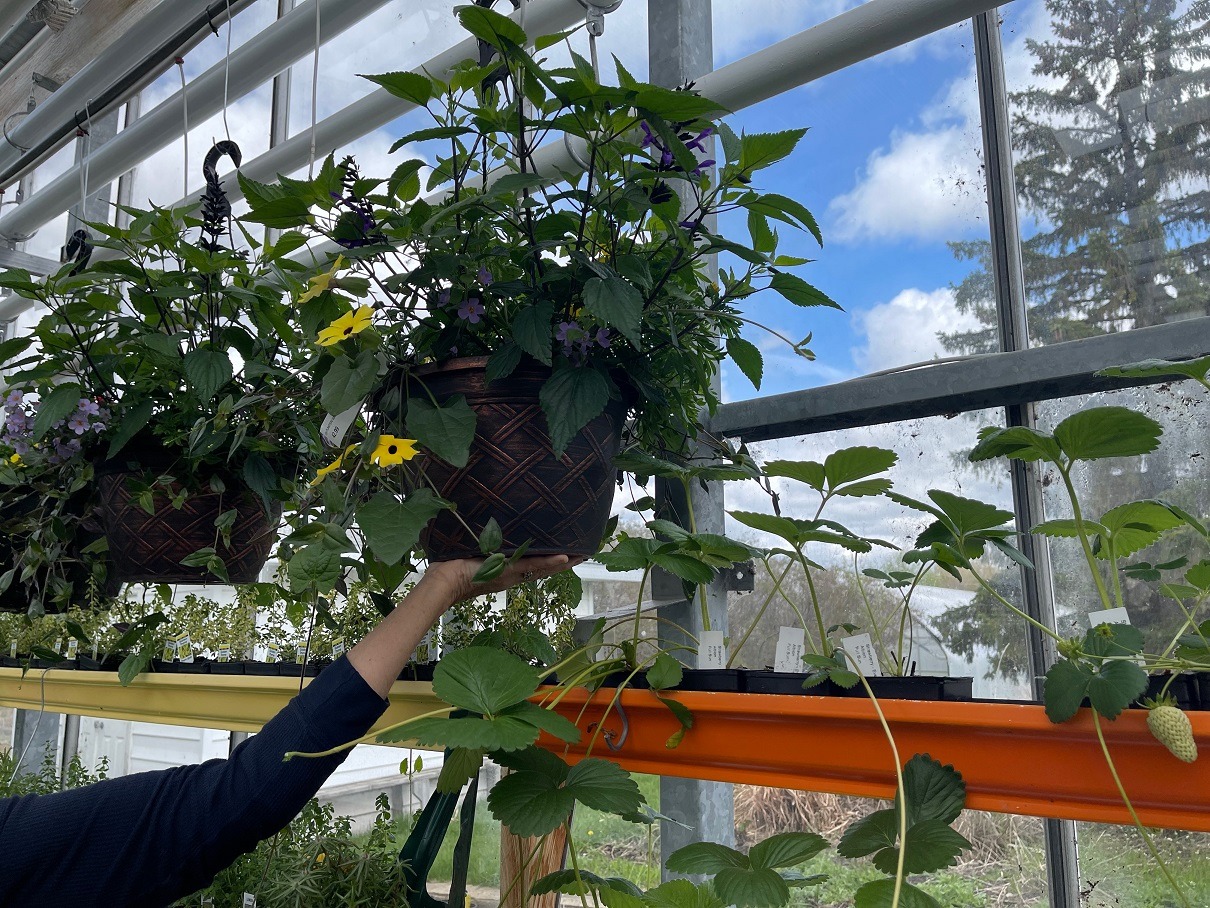
- Hanging baskets that measure up to 30 cm (12″) across are fully saturated when water drips out of the bottom of the container.
- Water doesn’t always drip out of the bases of larger hanging baskets when they have enough water.
- Check that the soil hasn’t pulled away from the pot’s edges when it gets dry. If it has, water may take an easy exit along the side of the pot and drip out without actually moistening the soil. If you see this with your hanging basket, submerge the base of the pot in a pan or bucket of water to allow it to soak up water from the base to rehydrate.
- I also top the soil of my hanging baskets with about 2.5 cm (1”) of mulch to help retain moisture. There’s more on mulch a little further down in this blog.
How to Water Planted Containers and Pots
- How to water upright planted pots and containers depends on the size of the pot:
- For pots measuring up to 30 cm (12″) across, hydrate until you see water drip out of the bottom of the pot.
- For planters larger than 30 cm (12″) across, water generously, but the water may not drip out of the bottom. If containers of this size are watered to the point of dipping, it may result in overhydration, so use the same method as watering flower beds, in-ground gardens, or raised beds by sticking your index finger into it to check hydration.
- Use your judgment and keep track of how much water the planter uses, how the plants respond, and how often they need water to know if you are applying enough water.
How to Water In-ground Plantings

- Create a ‘well’ for plants in flower beds and raised beds to hold water by making an indented circle in the soil around the base of the plants. This will establish a small reservoir to hold water in, let it soak in at the roots, and prevent water from flowing away from the plant. Fill the reservoir to maximum when watering.
- Consider using drip irrigation. Drip irrigation is a simple, effective, and efficient method of watering that delivers water to the base of the plant with virtually no water loss through evaporation, especially when it is covered with mulch.
2. Stick to your Regular Fertilizing Routine During the Heat of Summer

A well-nourished plant is a healthy plant. Plants with proper nutrition are more robust and tolerate stress better. In hot, dry weather, fertilizing can be a little tricky.
Maintain a regular weekly fertilizing schedule for annuals as you would in typical summer weather, but don’t apply any supplemental fertilizer. You may think that plants will need more fertilizer because of the higher metabolic needs in hot weather, but when plants are water-stressed, their structures can burn with extra fertilizer.
Related:
3. Mulch Helps Gardens Stay Cool and Hydrated When it’s Hot
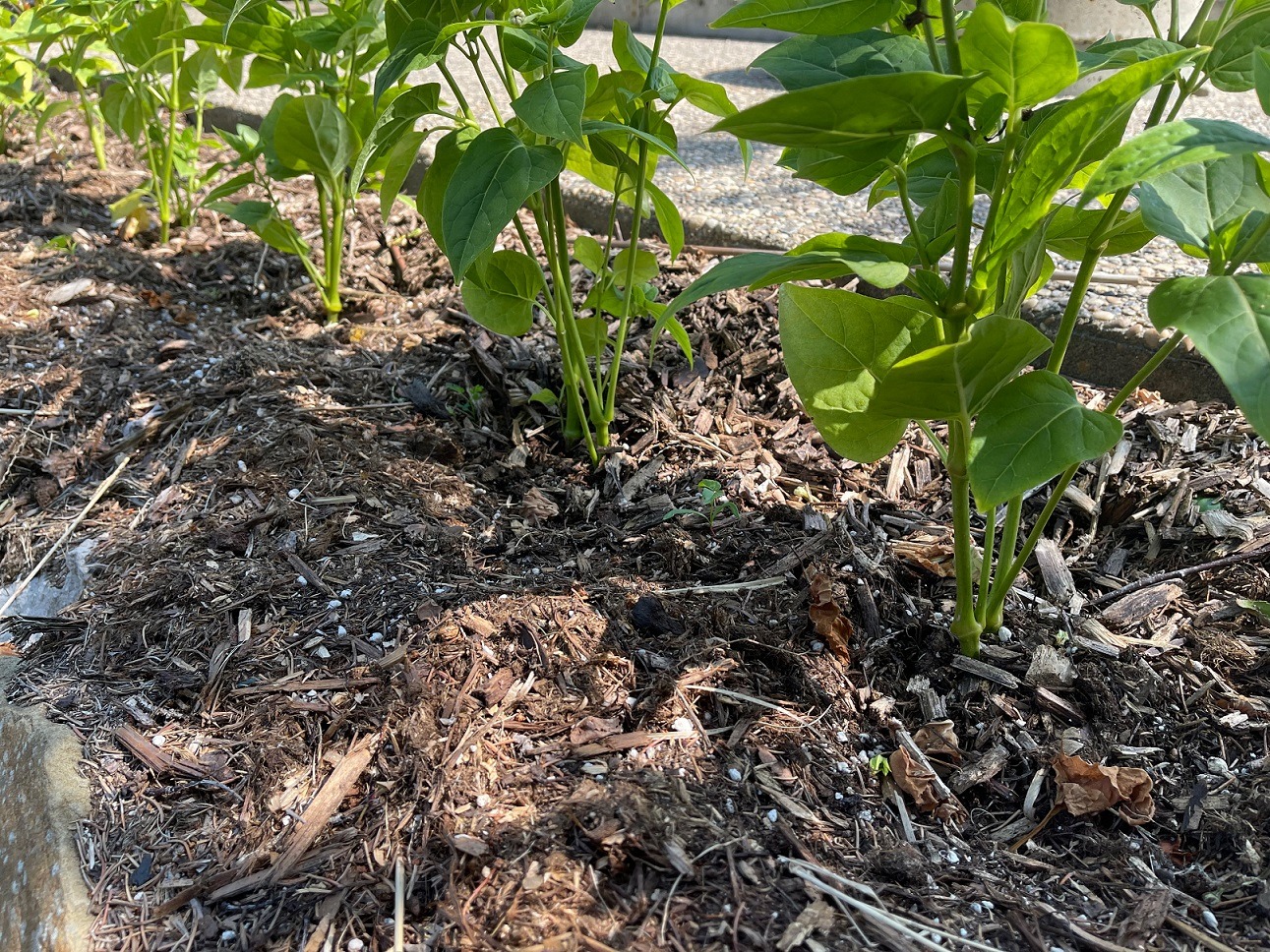
Mulch is one of your garden’s best friends, no matter the weather. Mulch is a protective layer of material placed on the soil surface to benefit the plants and gardens they cover.
Mulch is ideal for hot, dry weather conditions because it reduces water evaporation and conserves soil moisture. It also insulates the soil from hot summer temperatures and cools it down.
Organic mulches are the best for home garden use. Organic mulches occur naturally in nature and break down over time. The most common types of organic mulches are bark and wood chips.
Avoid inorganic mulches like rocks, rubber pellets, and landscape fabric. These kinds of mulches aren’t effective at retaining moisture, and they exacerbate the effects of hot weather by transferring heat into the soil causing heat stress in the roots.
Related:
4. Deadhead Regularly in Hot, Dry Weather
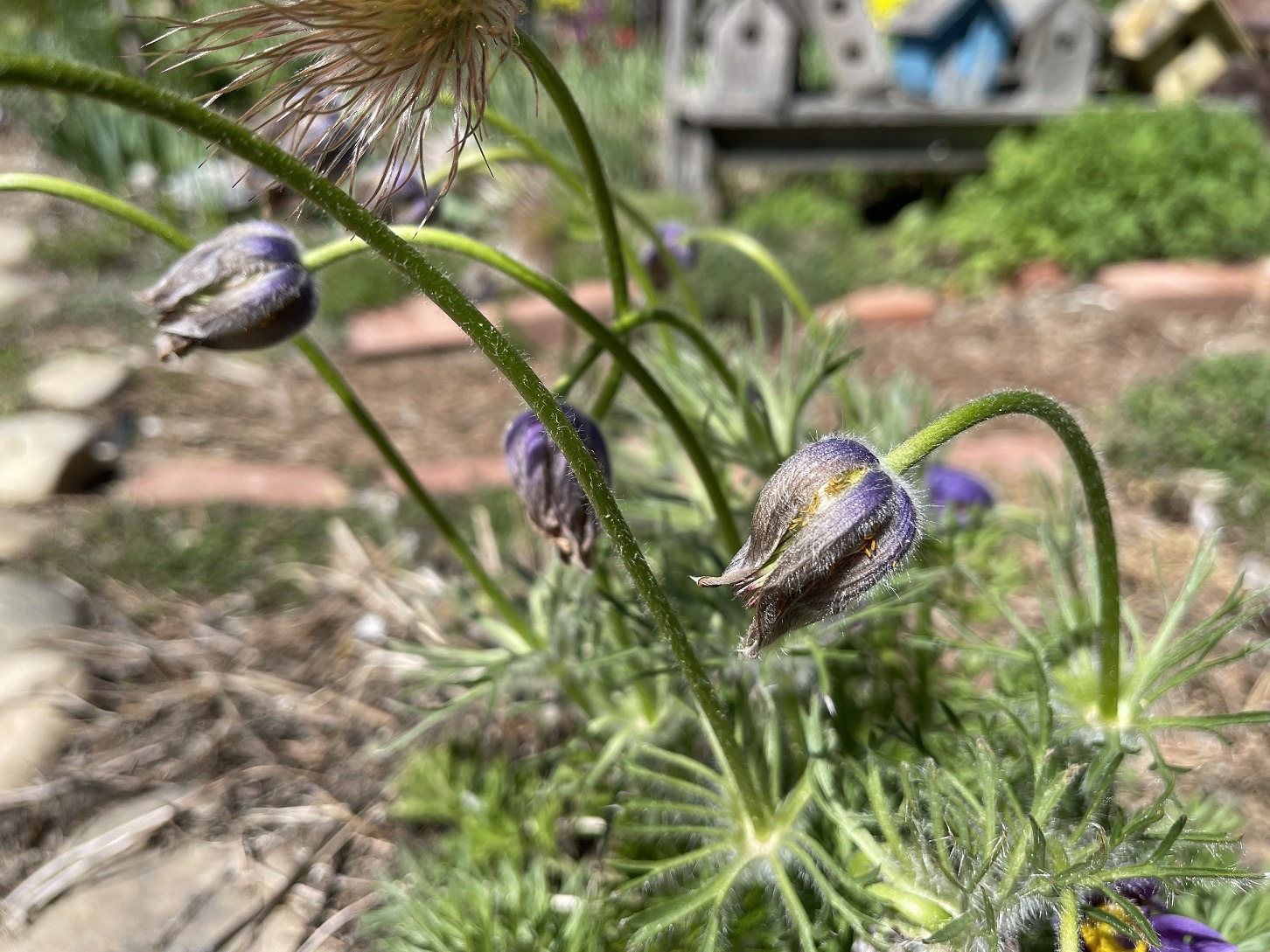
Deadheading is a horticultural term for removing dead flowers.
The business of plants is to keep the species alive. Plant reproduction has many faces, and many annuals and perennials produce seeds following flower pollination. After pollination occurs, plants shift their energy focus from flower to seed production.
It’s a good idea to regularly deadhead flowers during hot weather because it reduces metabolic demands on the plant.
5. Pinch Back Old Leaves and Unproductive Plant Stems in Hot Weather
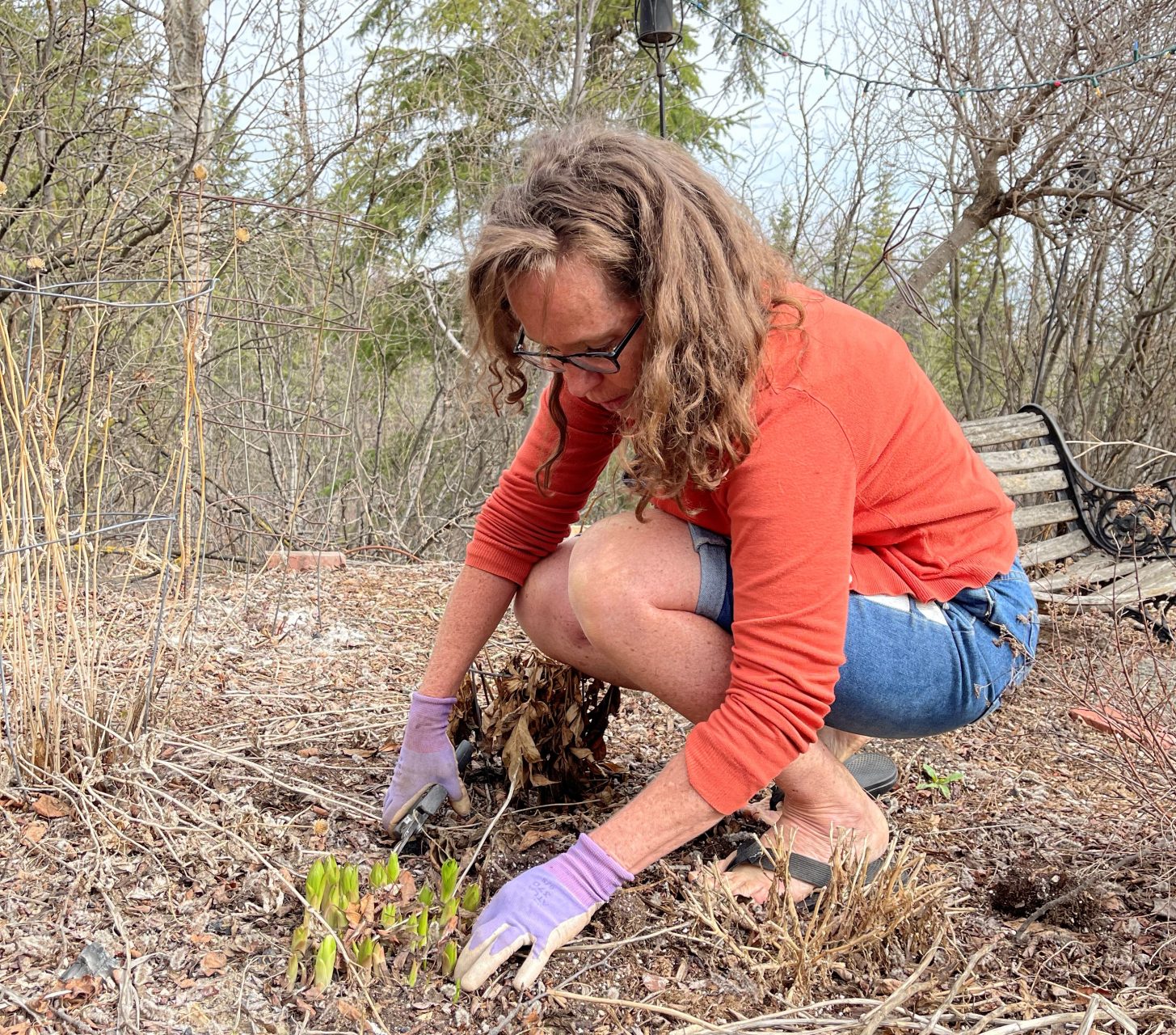
Alleviating stress is the overarching goal during excessively hot, dry weather.
Take off old, tired, or dead leaves to reduce metabolic requirements and let the most productive leaves do the work of photosynthesis.
If an entire stem or portion of the plant is struggling, consider pinching them back to preserve the healthiest parts of the plant.
6. Provide Some Shade to Compromised Plants in Sizzling Heat
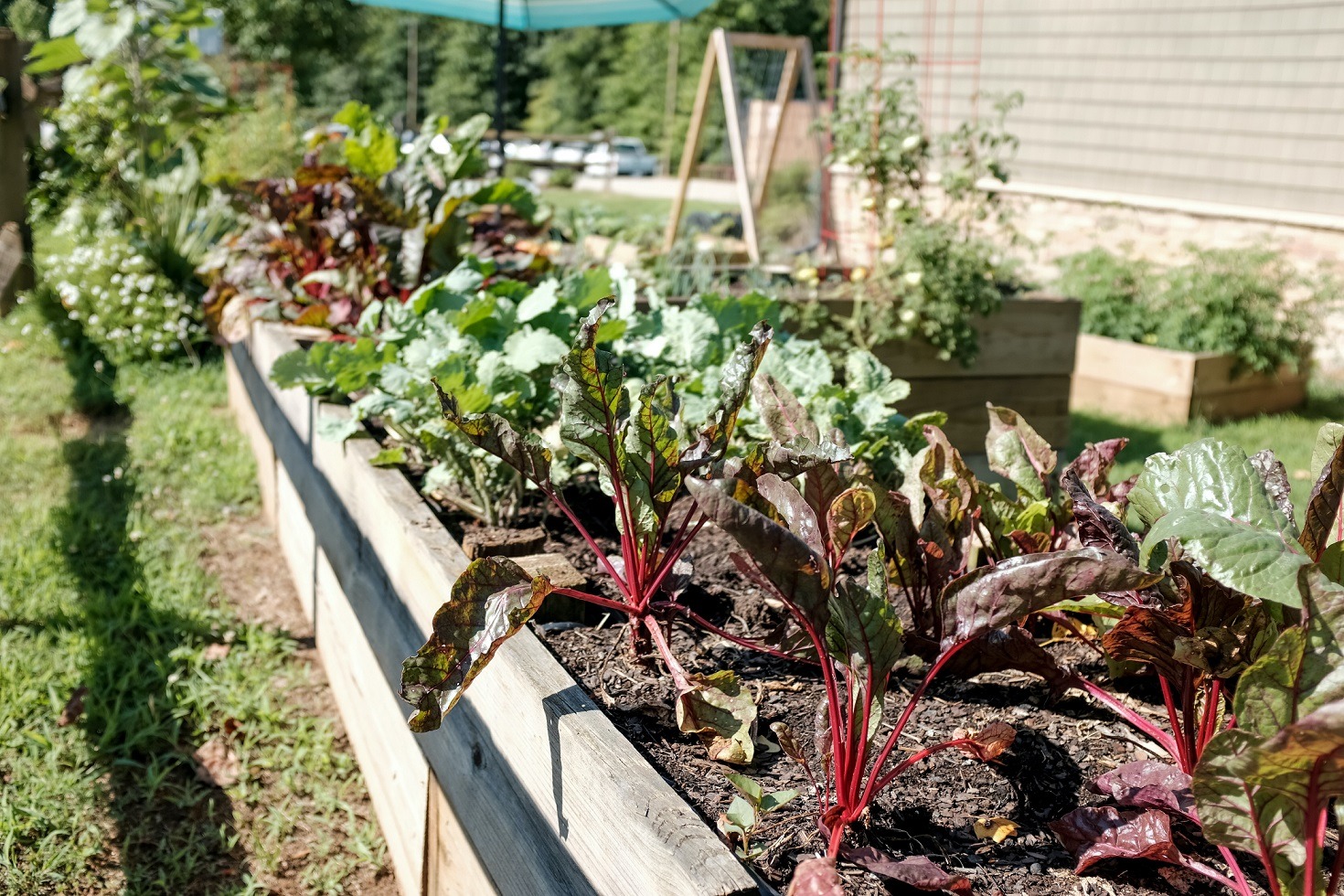
Partial-sun plants will tolerate full sun if the weather is mild but crazy-hot weather can burn these more delicate plants. The leaves may sunburn, just like humans. Sunburned leaves can present several ways. You may see pale streaks, spots, faded colour and in extreme cases, the leaves may turn brown and crispy.
Consider moving tender plants out of the hot sun and into a partial shade environment to reduce the stress.
Switch planted containers and hanging baskets into less intense sun exposure areas and consider setting up some lattice or shade screen for stationary, in-ground plants.
Summing up Garden Care During Hot, Dry Weather
Caring for your garden in hot weather is about doing what you can to relieve plant stress and to support them through intense heat and drought.
Consistent watering makes the greatest impact during periods of scorching heat. Maintaining a regular fertilizing schedule, deadheading, pinching back compromised plant structures, and using mulch goes a long way to get your garden through critical moments of hot, dry weather.
©Sharon Wallish Murphy ©Gardening with Sharon



